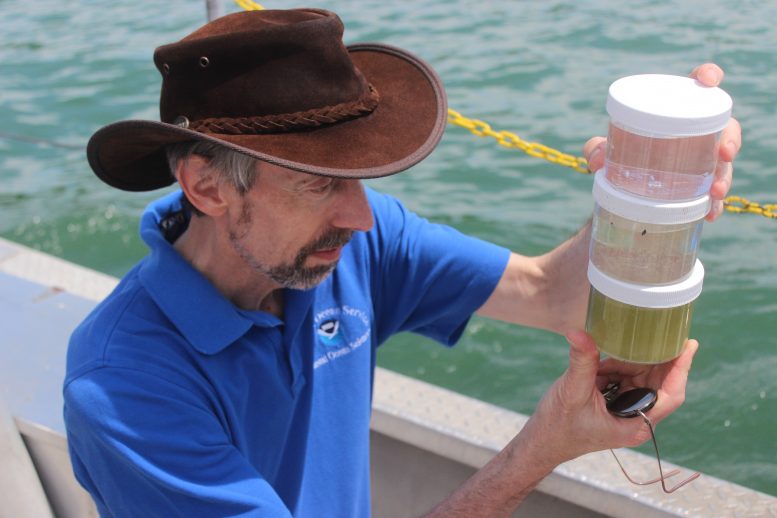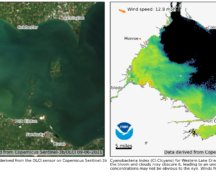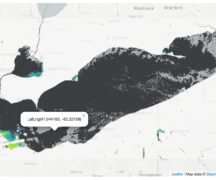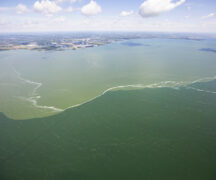By DAVID DUPONT
BG Independent News
The annual harmful algae bloom forecast hosted by the Ohio Sea Grant College Program writes its own headline – how large the bloom will be on the western basin of Lake Erie.
This year the prediction is for a light bloom, a rating of 3.5, on a scale that extends beyond 10 – the researchers set the scale some year’s thinking it was the worst, only to have a larger bloom a couple years later.
Rick Stumpf, of the National Oceanic and Atmospheric Administration, said: “Most of the lake will be fine most of the time.”
There will be some discoloration in some areas of the lake by the end of July.
All the blooms have some level toxicity, but the scum is 100-fold more toxic. People and pets should avoid it. A few dogs die every year after swimming in the scum, Stumpf said.
The forecast, with its multiple presentations of enough data to make a layperson’s head spin, is an exercise is the intricacies of science.
Can it be frustrating? Yes.
What we all care about, of course, is how likely is it that we’ll have a recurrence of the Toledo water crisis in August 2014 when the toxicity caused by a harmful algae bloom shut down water systems in the area– though not Bowling Green’s.
Researchers have yet to find a way to forecast the level of toxicity.
And where the blooms will develop depends on the wind, Stumpf said. In 2014 scum collected right over the water system’s intake pipes.
Trying to predict what the winds will be in a 30-40 day period is “challenging,” though researchers are working on it.
Tom Henry, the environmental reporter from The Blade, asked if the smaller blooms the last few years resulted from changes made to agricultural practices or less water flowing down the Maumee because of less rainfall.
Dr. Laura Johnson, from Heidelberg College who leads a long standing water study of the Maumee, said this was likely from lower water flow.
She urged patience when determining how a changes in land management impact Lake Erie. Figuring that out will take a while given the size and complexity of the watershed.
How much phosphorus, in its various forms, flows down the Maumee and into Erie, depends not just on how much is applied but how much water flow there is.
An interesting case is 2019. That was the year with so much rain that more than half the acreage in the watershed couldn’t be planted. In Wood County about 90 percent of crops were not planted.
A significant amount of phosphorus still found its way into the lake, but far less, Johnson reported than what would have been expected given the volume of water.
The culprit is phosphorus already in the soil.
The next year as farmers did a lot of work trying to bring back the damage fields, more particulate phosphorus, as opposed to dissolved, showed up in the data, Johnson said.
Also at play is the number of severe storms. A torrential rainfall will greatly increase the amount of phosphorus flowing into the lake.
Johnson said 70 percent of the phosphorus measured at the Waterville station from March through the end of June, came in just 35 days.
These severe storms are more likely because of climate change, scientists say.
That throws another bit of uncertainty into the forecast, Stumpf said. But they anticipate normal rainfall.
One way to mitigate this is by holding more water on the landscape in wetlands to allow the nutrients to be absorbed and diluted before they find their way to Lake Erie, said Santina Wortman, of the Environmental Protection Agency’s Great Lakes Program Office Chicago.
To reduce the amount of nutrients that feed the algae takes work in all sectors, rural and urban, she said. “There’s no silver bullet.”
Improvements to Detroit’s water treatment system have greatly reduced the nutrient load from Michigan.
There are good signs, Wortman said. There are early signs that blooms have been smaller and developing less scum.
“There’s so much good work happening,” she said. “We’re heading in the right direction.”





